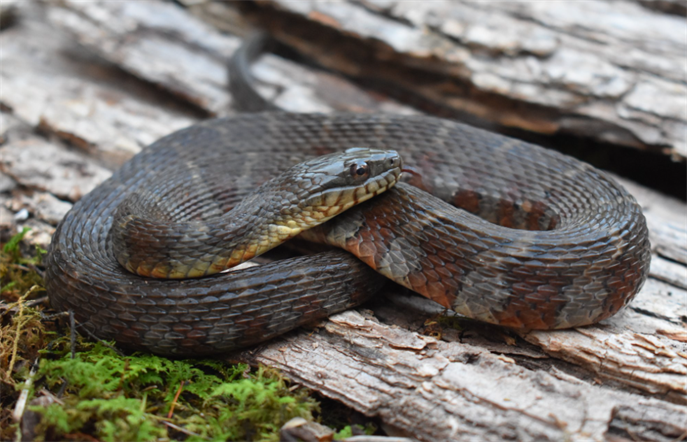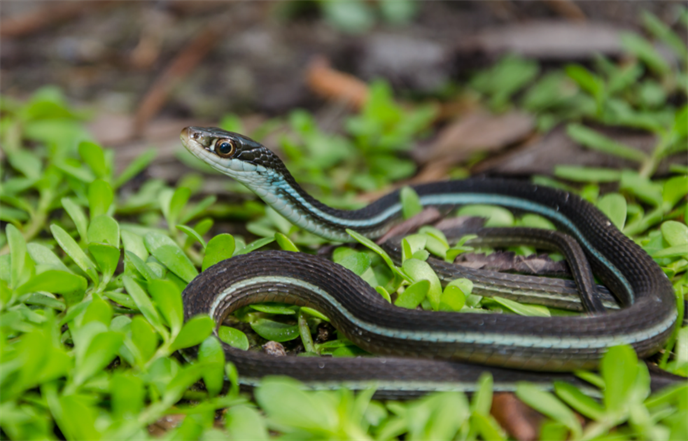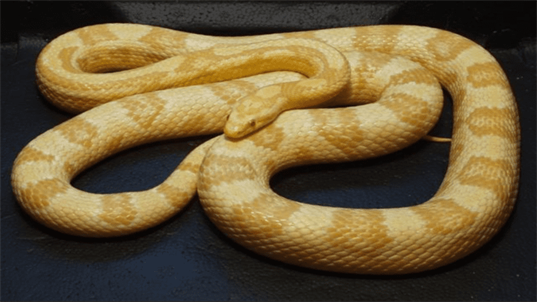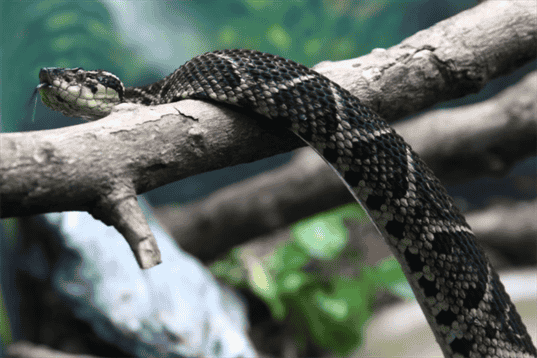Snakes of New Hampshire Species Guide and Natural Insights
Snakes of New Hampshire are home to diverse snake species, each with unique characteristics and adaptations. From the elusive Eastern Timber Rattlesnake to the commonly encountered Garter Snake, these fascinating reptiles play an essential role in the state’s ecosystem. In this introduction, we will explore the snakes of New Hampshire, their habitats, behavior, and conservation efforts to preserve these remarkable creatures. Join us to discover the captivating world of snakes in the Granite State.
What Are The Common Snake Species Found in New Hampshire?
Snakes of New Hampshire have several snake species, each with unique characteristics. Let’s explore some of the common snake species found in this region:
- Eastern Garter Snake (Thamnophis sirtalis):
The Eastern Garter Snake is one of the most widespread and frequently encountered snakes in New Hampshire. Known for their distinct yellow or white stripes running down their bodies, they are non-venomous and are crucial in controlling rodent populations.

- Eastern Milk Snake (Lampropeltis triangulum):
The Eastern Milk Snake is another commonly found snake in New Hampshire. They have vibrant, patterned scales with a reddish-brown or grayish background color and dark blotches. These harmless snakes are beneficial as they feed on small rodents and pests.
- Northern Watersnake (Nerodia sipedon):
The Northern Watersnake is a semi-aquatic species often found near bodies of water such as rivers, ponds, and lakes. They have dark brown or blackish bodies with distinctive reddish-brown or dark brown crossbands. Watersnakes are non-venomous but can be defensive if cornered or threatened.

- Common Gartersnake (Thamnophis sirtalis):
Similar in appearance to the Eastern Garter Snake, the Common Gartersnake is also prevalent in New Hampshire. They have a range of color variations, including green, brown, or black, with three longitudinal stripes running down their bodies. These harmless snakes are adaptable and found in various habitats.
- Eastern Ratsnake (Pantherophis alleghaniensis):
The Eastern Ratsnake, also known as the Black Ratsnake, is the largest snake species in New Hampshire. They have a glossy black color with a white chin and throat. Ratsnakes are excellent climbers and are beneficial in controlling rodent populations, but they are non-venomous and pose no threat to humans.
- Eastern Ribbon Snake (Thamnophis sauritus):
The Eastern Ribbon Snake is a slender and agile snake species commonly found near wetlands and marshes in New Hampshire. They have distinctive long and narrow bodies with three yellowish-green stripes running along their dark-colored bodies. Ribbon snakes primarily feed on small amphibians and insects.

It’s important to note that all snakes play a vital role in maintaining the ecological balance and should be respected and left undisturbed in their natural habitats. If you encounter a snake, it is recommended to maintain a safe distance and observe from afar.
Where Can I Encounter Snakes in New Hampshire?
New Hampshire offers various habitats where you can encounter snakes. Let’s explore some of the places where you may come across these fascinating reptiles:
- Forests and Woodlands:
Snakes in New Hampshire are often found in forested areas and woodlands. These habitats provide ample cover, including fallen logs, leaf litter, and rock formations, which snakes use for shelter and hunting. Exploring hiking trails and nature reserves that traverse through forests increases your chances of encountering snakes.
- Wetlands and Marshes:
Wetlands, including swamps, marshes, and bogs, are prime habitats for snakes in New Hampshire. These areas offer various prey items, such as frogs, tadpoles, and small fish, attracting snake species like the Eastern Ribbon Snake and Northern Watersnake. Paying a visit to nature reserves and wildlife sanctuaries with wetland habitats provides opportunities for snake sightings.
- Fields and Meadows:
Open fields and meadows with tall grasses and vegetation serve as hunting grounds for snakes. Species like the Eastern Garter Snake and Eastern Milk Snake are commonly found in areas where they search for small rodents, insects, and other prey. Taking walks or participating in nature programs in grassy regions may lead to snake encounters.
- Rocky Outcrops and Stone Walls:
New Hampshire’s landscape is dotted with rocky outcrops and stone walls, which offer excellent basking spots and hiding places for snakes. Eastern Ratsnakes, for example, are known to utilize rock crevices and stone walls for shelter. Exploring rocky habitats, such as natural rock formations and old stone walls, can increase the likelihood of snake encounters.

- Bodies of Water:
Snakes are often associated with bodies of water, including rivers, ponds, lakes, and streams. The Northern Watersnake, for instance, is frequently found near water sources where it can hunt for fish and amphibians. Exploring the shores, banks, and nearby trails of water bodies presents opportunities to spot these aquatic-loving snakes.
It’s important to remember that snakes are generally more active during warmer months, so visiting these habitats in spring and summer increases your chances of encountering them. While observing snakes, it is crucial to maintain a respectful distance and avoid disturbing or provoking them.
Are There Venomous Snakes in New Hampshire?
No, there are no venomous snakes native to New Hampshire. The state is fortunate to be free of venomous snake species, providing relief for residents and visitors alike. This absence of venomous snakes makes outdoor activities and exploration safer and more enjoyable.
Although New Hampshire does not have venomous snakes, it is essential to note that non-venomous snakes can still bite if threatened or provoked. However, their bites are harmless and typically result in minor injuries like scratches or punctures. Snakes in the region, such as the Eastern Garter Snake, Eastern Milk Snake, and Common Gartersnake, are non-venomous and pose no significant threat to humans.
It’s worth mentioning that while New Hampshire itself lacks venomous snakes, neighboring states like Massachusetts and Maine are home to venomous species such as the Timber Rattlesnake and Northern Copperhead. Nevertheless, these venomous snakes are extremely rare and limited to specific regions within those states, making encountering them in New Hampshire highly unlikely.
It’s always advisable to approach any snake with caution and respect, regardless of its evil or non-venomous nature. Keep a safe distance, avoid provoking or handling them, and appreciate them from afar. Remember, snakes play an essential ecological role in controlling rodent populations and maintaining the balance of the natural ecosystem.
What Is The Habitat Preference of Snakes in New Hampshire?
Sure. Here are some of the habitat preferences of snakes in New Hampshire:
- Woodlands:
Snakes are often found in forests, where they can find cover from predators and prey on small mammals, birds, and amphibians.
- Fields:
Snakes can also be found where they can bask in the sun and hunt for insects.
- Wetlands:
Some snakes, like the northern water snake, prefer to live in swamps. These snakes are often found near water, where they can hunt for fish, frogs, and other aquatic animals.
- Rocky areas:
Snakes can also be found in stony places, where they can find shelter from predators and the sun.
- Urban areas:
Some snakes, such as the garter snake, have adapted to living in urban areas. These snakes can be found in parks, gardens, and even backyards.
It is important to note that the habitat preferences of snakes can vary depending on the species. For example, the timber rattlesnake is a venomous snake found in rocky areas and forests. The garter snake, on the other hand, is a non-venomous snake found in various habitats, including woodlands, fields, and wetlands.
If you see a snake in New Hampshire, it is essential to leave it alone. Snakes are beneficial to the environment and play an important role in controlling populations of rodents and other pests.
How Can I Identify Different Snake Species in New Hampshire?
Identifying different snake species in New Hampshire can be exciting and rewarding. While it requires careful observation and knowledge of critical characteristics, here are some tips to help you in your quest:

- Size and Shape:
Pay attention to the snake’s size and overall body shape. Note whether it is slender, robust, or somewhere in between. It can provide initial clues about the species you are observing.
- Coloration and Patterns:
Take note of the snake’s coloration and patterns. Look for distinct markings, such as stripes, bands, spots, or a solid color. These patterns can vary significantly between species and serve as essential identification features.
- Head Shape:
Examine the snake’s head shape. Some species, like the venomous Timber Rattlesnake, have a triangular-shaped head, while others, like the non-venomous Eastern Garter Snake, have a more rounded head. Head shape can be a helpful characteristic in identification.
- Eye Characteristics:
Observe the snake’s eyes. Venomous snakes typically have elliptical or cat-like pupils, while non-venomous snakes usually have round pupils. This distinction can aid in differentiating between venomous and non-venomous species.
- Scale Patterns:
Take a closer look at the scales. Note the arrangement and patterns of scales on the snake’s body, including the ventral (belly) and dorsal (back) scales. These patterns can be unique to each species and contribute to identification.
- Behavior and Habitat:
Consider the snake’s behavior and habitat. Some species have specific habitat preferences, such as wetlands, forests, or open fields. Understanding the snake’s preferred habitat and behavior can provide additional clues to narrow the possibilities.
- Field Guides and Resources:
Consult field guides or reputable online resources specific to the snakes of New Hampshire. These guides typically include detailed descriptions, photographs, range maps, and other valuable information for identification purposes.
It’s important to remember that proper identification may require experience and expertise. Suppose you are uncertain or unfamiliar with a particular snake species. In that case, it’s best to appreciate it from a safe distance and seek guidance from local experts or herpetology professionals who can provide accurate identification and further information.
Always prioritize safety and respect for the snakes and their natural habitats while engaging in snake identification activities.
Are There Any Endangered Snake Species in New Hampshire?
Fortunately, New Hampshire has no snake species listed as endangered or critically endangered. The state’s conservation and habitat preservation efforts have contributed to the stable populations of native snake species. However, it’s essential to remain vigilant and protect their habitats to ensure long-term survival.
While endangered snake species are not present in New Hampshire, neighboring states, such as Massachusetts and Maine, are home to some species facing conservation challenges. For example, the Eastern Massasauga Rattlesnake (Sistrurus catenatus catenatus) is a federally listed endangered species in some parts of Massachusetts. It primarily inhabits wetlands and faces habitat loss, fragmentation, and human disturbance threats.
Conservation efforts in New Hampshire extend beyond state borders, with collaborative initiatives and regional partnerships aiming to protect and conserve snake populations throughout New England. These efforts focus on habitat restoration, public awareness, research, and monitoring to ensure the well-being of snake species across their natural ranges.
Additionally, educational programs, public outreach, and scientific studies are crucial in raising awareness about the importance of snakes and their conservation. By promoting understanding, appreciation, and responsible interactions with snakes, individuals can contribute to their protection and conservation efforts, even in areas where they are not currently endangered.
It’s worth noting that conservation statuses can change over time due to various factors, including population fluctuations, habitat alterations, and new scientific findings. Therefore, ongoing monitoring and adaptive management practices remain essential to safeguard the future of snake populations in New Hampshire and the surrounding region.
What is The Behavior and Diet of Snakes in New Hampshire?
The behavior and diet of snakes in New Hampshire are fascinating aspects of their natural history. Let’s delve into these aspects in more detail:
Behavior:
- Basking and Thermoregulation:
Snakes are ectothermic, relying on external heat sources to regulate their body temperature. They engage in basking behavior, often seen coiled in sunny spots or on rocks to absorb warmth. Basking helps them maintain optimal body temperature for digestion and other physiological functions.
- Hibernation:
Like many temperate reptiles, Snakes in New Hampshire undergo hibernation during the colder months. They seek sheltered locations, such as underground burrows or rock crevices, to safely pass the winter. Hibernation allows snakes to conserve energy and survive harsh conditions.
- Hunting and Feeding:
Snakes are carnivorous predators and play a vital role in controlling populations of small mammals, amphibians, and invertebrates. Everyday prey items for New Hampshire snakes include rodents, frogs, toads, salamanders, small birds, eggs, and insects. Snakes use various hunting techniques, such as ambush, pursuit, or constriction, depending on their species and prey.
- Defensive Mechanisms:
When threatened, snakes have different defensive strategies. Some species, like the Eastern Garter Snake, release a musky odor or excrete defensive substances. Others, such as the Eastern Milk Snake, may vibrate their tails or adopt a defensive posture to intimidate potential predators. Rarely, non-venomous snakes may bite as a last resort when feeling threatened.
- Mating and Reproduction:
Snakes in New Hampshire typically mate in the spring or early summer. Mating behavior can involve elaborate courtship displays, including male combat or intertwining of bodies. After successful mating, females may lay eggs or give birth to live young, depending on the species. Snakes exhibit little parental care, and offspring are independent of birth.
Diet: Snakes have specialized feeding adaptations and diets that vary between species. In New Hampshire, the diet of snakes primarily consists of the following:
- Rodents: Mice, voles, and small rats.
- Amphibians: Frogs, toads, and salamanders.
- Birds: Small birds and their eggs.
- Invertebrates: Insects, earthworms, and slugs.
Snakes use a unique feeding mechanism to swallow prey whole, aided by flexible jaws and expandable bodies. Their digestive system efficiently breaks down and absorbs nutrients from their game.
It’s important to note that different snake species may have specific dietary preferences and adaptations to suit their ecological niche and habitat. Understanding the behavior and diet of snakes not only enhances our appreciation for these remarkable creatures and contributes to their conservation by preserving their natural habitats and food sources.
How do snakes in New Hampshire contribute to the ecosystem?
Snakes in New Hampshire play crucial roles in maintaining the balance and functioning of the ecosystem. Their contributions are diverse and significant, as outlined below:
- Pest Control:
Snakes are effective predators of rodents, such as mice and rats, which can cause agricultural damage and spread diseases. By preying on these small mammals, snakes help regulate their populations, reducing potential negative impacts on crops, stored food, and human health.
- Amphibian and Reptile Control:
Snakes also contribute to the control of amphibian and reptile populations. They feed on frogs, toads, salamanders, and other reptiles, helping to maintain balanced prey-predator relationships within these communities.
- Insect Regulation:
Some snake species include insects in their diet, helping to control populations of pests like insects and spiders. This indirect pest regulation can benefit agricultural and garden ecosystems by reducing the need for chemical pesticides.
- Nutrient Cycling:
Snakes contribute to nutrient cycling within ecosystems. As predators, they consume prey that has acquired nutrients from their environment. When snakes excrete waste, they return essential nutrients to the soil, aiding in the recycling and redistribution of nutrients in the ecosystem.
- Prey for Predators:
Snakes are a valuable food source for many other predators. Birds of prey, such as hawks and owls, larger mammals like foxes and raccoons, and even other snakes, may prey on snakes. Their presence in the food chain helps sustain the populations of these predators.
- Seed Dispersal:
Snakes can play a role in seed dispersal. By consuming fruits or seeds from various plants, they may inadvertently transport seeds to new locations through their digestive system. This process contributes to plant species’ distribution and colonization, aiding vegetation diversity and regeneration.
- Ecological Indicator:
Snakes can serve as indicators of overall ecosystem health. Their presence and abundance can reflect the availability of suitable habitats, prey availability, and the overall ecological balance. Monitoring snake populations can provide valuable insights into the well-being of ecosystems and help identify potential environmental issues.
Understanding and appreciating the ecological contributions of snakes in New Hampshire emphasizes the importance of conserving their habitats and protecting their populations. By maintaining healthy snake populations, we contribute to the overall health and stability of the ecosystem, promoting biodiversity and ecological resilience.
Are There Any Conservation Efforts Focused on Protecting Snakes in New Hampshire?
Conservation efforts are in place to protect snakes and their habitats in New Hampshire. These initiatives aim to ensure the long-term survival of native snake species and maintain healthy ecosystems. Here are some notable conservation efforts focused on snakes in the region:
- Habitat Conservation:
Protecting and preserving natural habitats is crucial for snakes’ survival. Conservation organizations, land trusts, and governmental agencies work together to identify and manage critical habitats, including wetlands, forests, and grasslands, vital for snakes’ survival. It involves implementing measures to prevent habitat loss, degradation, and fragmentation.
- Research and Monitoring:
Scientific research and monitoring programs are vital in understanding snake populations, distribution, and ecological requirements. Conservation organizations collaborate with researchers, herpetologists, and citizen scientists to gather data on snake species, population trends, and habitat preferences. This information helps inform conservation strategies and management decisions.
- Public Education and Outreach:
Public education programs raise awareness about the importance of snakes in ecosystems and dispel misconceptions and fears. Workshops, presentations, and field trips organized by conservation groups aim to promote a better understanding of snakes, their ecological roles, and the need to protect their habitats. Education initiatives also emphasize responsible behavior when encountering snakes in the wild.
- Habitat Restoration:
Restoration projects focus on enhancing degraded or altered snake habitats. Efforts include restoring wetlands, creating wildlife corridors, and implementing land management practices that benefit snakes and their prey. Restoring natural habitat features provides snakes with suitable foraging areas, shelter, and places for hibernation.
- Road Mortality Mitigation:
Road mortality is a significant threat to snake populations. Conservation organizations collaborate with transportation authorities to implement measures that reduce snake mortality caused by vehicle collisions. It can involve installing snake-friendly fencing, underpasses, or overpasses to help snakes safely cross roads.
- Collaboration and Partnerships:
Collaboration among conservation organizations, government agencies, landowners, and communities is vital for effective snake conservation. Partnerships foster the exchange of knowledge, resources, and expertise, leading to more comprehensive conservation strategies and coordinated efforts.
- Policy and Advocacy:
Conservation groups advocate for policies and regulations that protect snakes and their habitats. They work closely with governmental bodies to ensure adequate legal protection, land-use planning, and enforcement of conservation measures. Advocacy efforts also involve raising public awareness about the importance of snakes in the ecosystem and garnering support for their conservation.
These conservation efforts and ongoing research and public involvement contribute to the conservation and protection of snakes in New Hampshire. By safeguarding their habitats and promoting coexistence with these fascinating creatures, we can ensure their presence for future generations and maintain the region’s ecological integrity.
FAQs
1. Are there venomous snakes in New Hampshire?
Yes, there are venomous snakes in New Hampshire. The most common venomous species is the Northern Copperhead.
2. What is the most common snake species in New Hampshire?
The most common snake species in New Hampshire is the Eastern Garter Snake.
3. Are snakes protected by law in New Hampshire?
Yes, some species of snakes are protected by law in New Hampshire. The most common protected species is the Northern Copperhead.
Conclusion
Snakes are an important part of the New Hampshire ecosystem. They can be found in a variety of habitats, ranging from forests to wetlands. There are both venomous and non-venomous species in the state, with the most common being the Eastern Garter Snake. It is important to remember that all snakes play an important role in the environment and should be respected and left alone.







